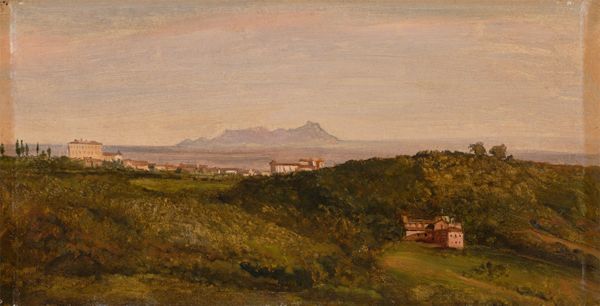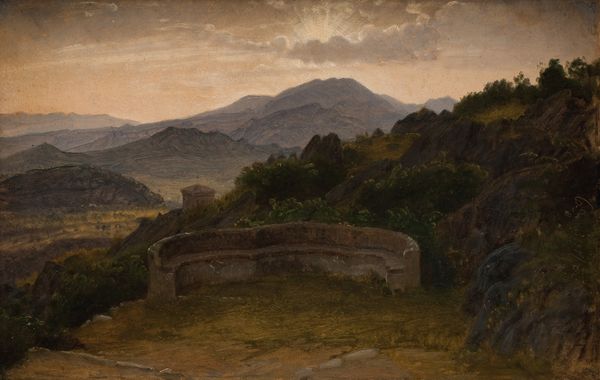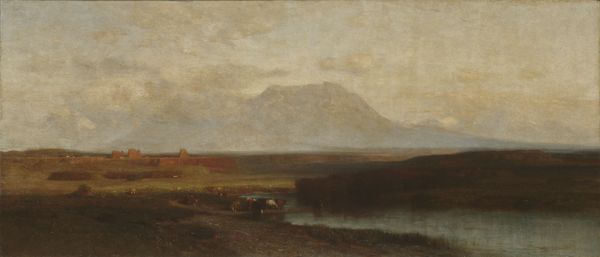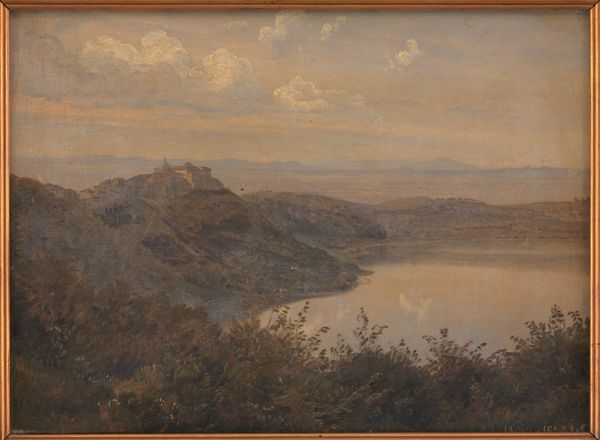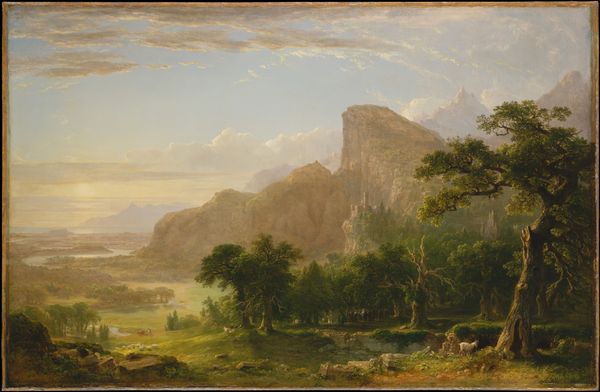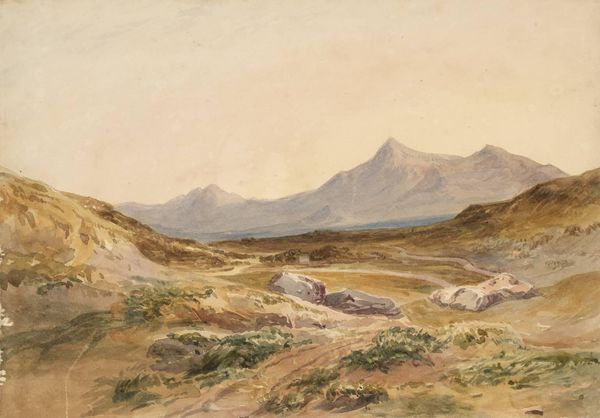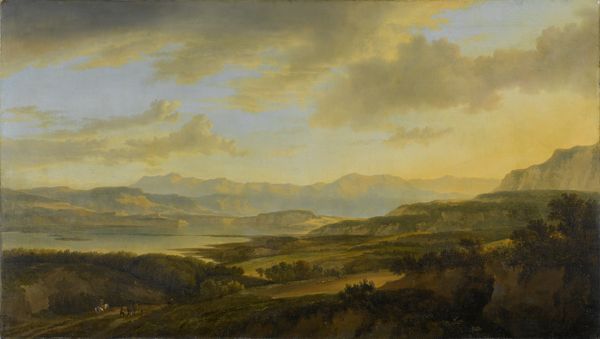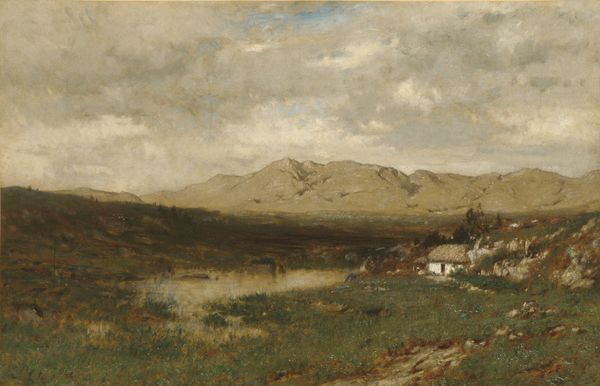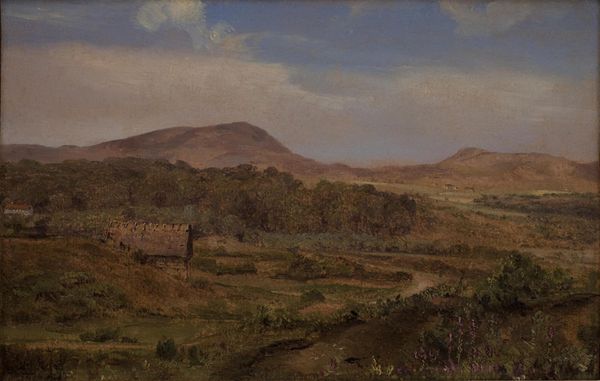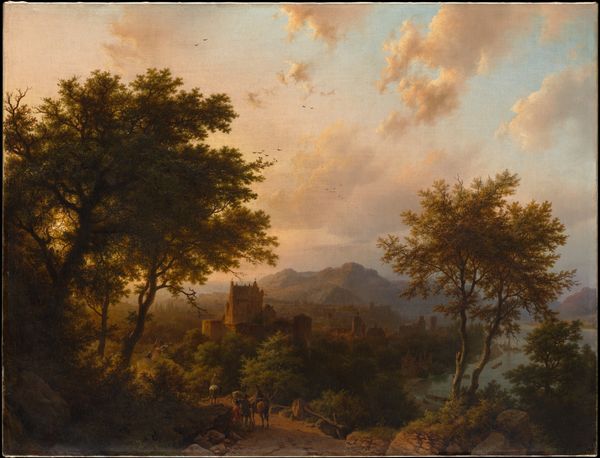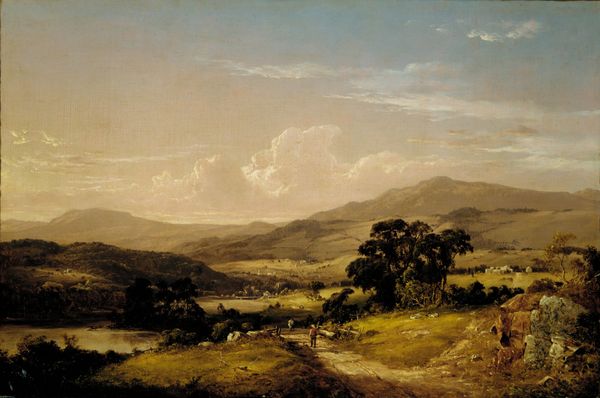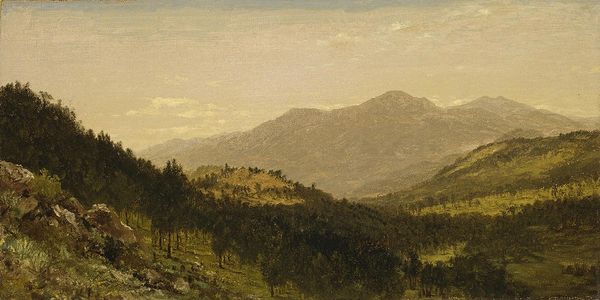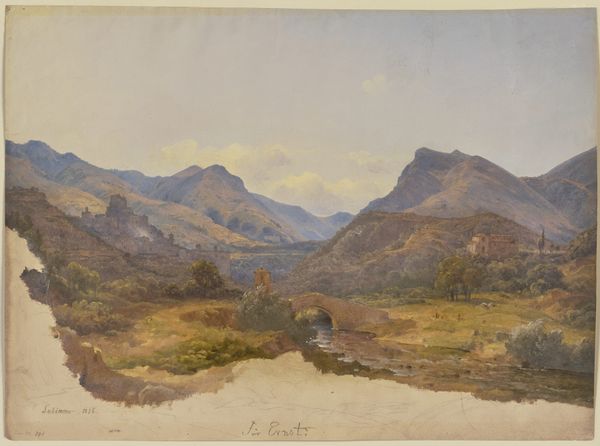
Copyright: Public Domain
Curator: This is Carl Morgenstern's "Lake Maggiore," completed in 1856. The artist captured the scene using oil on canvas, showcasing a panoramic view. What strikes you first? Editor: An immense calm. There is a palpable stillness achieved through Morgenstern's soft, hazy brushstrokes. A quietness pervades that could also hint at something lurking just under the surface, too. Curator: Note how Morgenstern establishes depth through distinct planes. The foreground, middle ground with the lake and the distant mountains layered atop one another creating a beautiful composition. Editor: Yes, and the overall tonality amplifies the historical context. While the painting is formally a landscape, there’s also a strong sense of 19th-century yearning embedded within the artwork. Perhaps the sense of longing present at that particular historical juncture, after the failed revolutions. The way the architecture fades in the distance reminds me of that. Curator: His manipulation of light and color serves to heighten this romantic idealization, the blurred and indistinct forms that lend an ethereal quality. I wonder about the artistic influences. Perhaps echoes of Turner, particularly in Morgenstern's atmospheric perspective. Editor: Perhaps so, but in relation to women and marginalized bodies and histories? Are we ignoring how women who painted landscape were barred from this ‘idealism’? It almost makes me cringe in relation to certain figures throughout the cannon when discussing landscape without certain qualifications. Curator: While such issues undeniably existed, this perspective is an appreciation for aesthetic accomplishment—though I accept that contextualising this sort of artwork involves understanding historical inequalities. Editor: Precisely! Seeing it in context with struggles, loss, revolutions and identity certainly reframes our experience, doesn't it? It creates the narrative, the power. Curator: A final observation might be on the painting’s surface. Up close, the texture reveals his precise brushwork. It has such energy but that has been flattened out overall for aesthetic reasons, no? Editor: Exactly. A final moment to reflect, perhaps, that it is precisely this dialogue, where formality meets historical inquiry, where meaning begins.
Comments
No comments
Be the first to comment and join the conversation on the ultimate creative platform.
